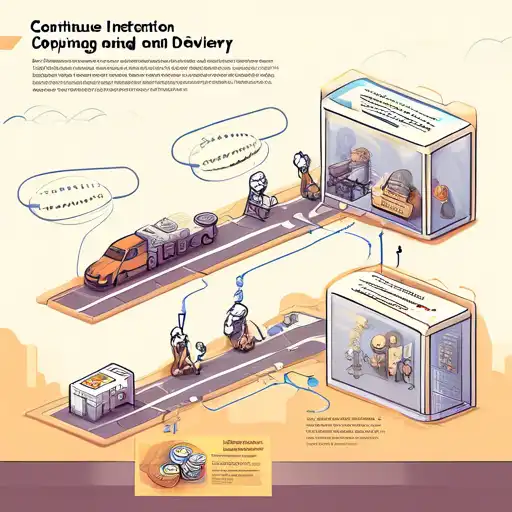What is Continuous Integration and Delivery?
Continuous Integration (CI) and Continuous Delivery (CD) are pivotal practices in modern software development, aimed at improving the efficiency and reliability of software releases. CI/CD automates the integration of code changes from multiple contributors into a single software project, ensuring that the software can be reliably released at any time.
The Benefits of CI/CD
Implementing CI/CD brings numerous benefits to software development teams, including:
- Reduced integration problems
- Faster release rates
- Higher quality software
- Improved team productivity
By automating the build, test, and deployment processes, teams can focus more on development and less on the logistics of software release.
How CI/CD Works
Continuous Integration involves developers merging their changes back to the main branch as often as possible. Each merge triggers an automated build and test sequence to detect errors quickly. Continuous Delivery extends CI by deploying all code changes to a testing or staging environment after the build stage. This ensures that the software can be deployed to production at any time.
Best Practices for Implementing CI/CD
To maximize the benefits of CI/CD, consider the following best practices:
- Maintain a single source repository
- Automate the build process
- Make your build self-testing
- Every commit should build on an integration machine
- Keep the build fast
- Test in a clone of the production environment
- Make it easy for anyone to get the latest executable version
- Everyone can see what's happening
- Automate deployment
Adhering to these practices ensures a smooth and efficient CI/CD pipeline.
CI/CD Tools
There are several tools available to help teams implement CI/CD, including Jenkins, Travis CI, CircleCI, and GitHub Actions. These tools automate the steps in the software delivery process, such as initiating builds, running tests, and deploying to production environments.
Conclusion
Continuous Integration and Delivery are essential practices for any team looking to improve their software development process. By automating the integration and delivery processes, teams can achieve faster release cycles, higher quality software, and improved productivity. Whether you're just starting with CI/CD or looking to optimize your existing pipeline, understanding these concepts is the first step towards a more efficient development workflow.
For more insights into optimizing your development process, check out our guide on Agile Development Practices.
